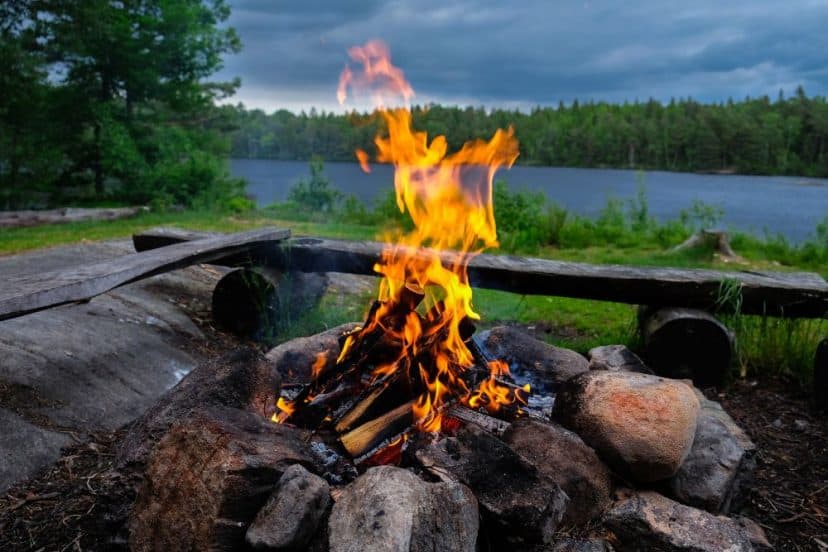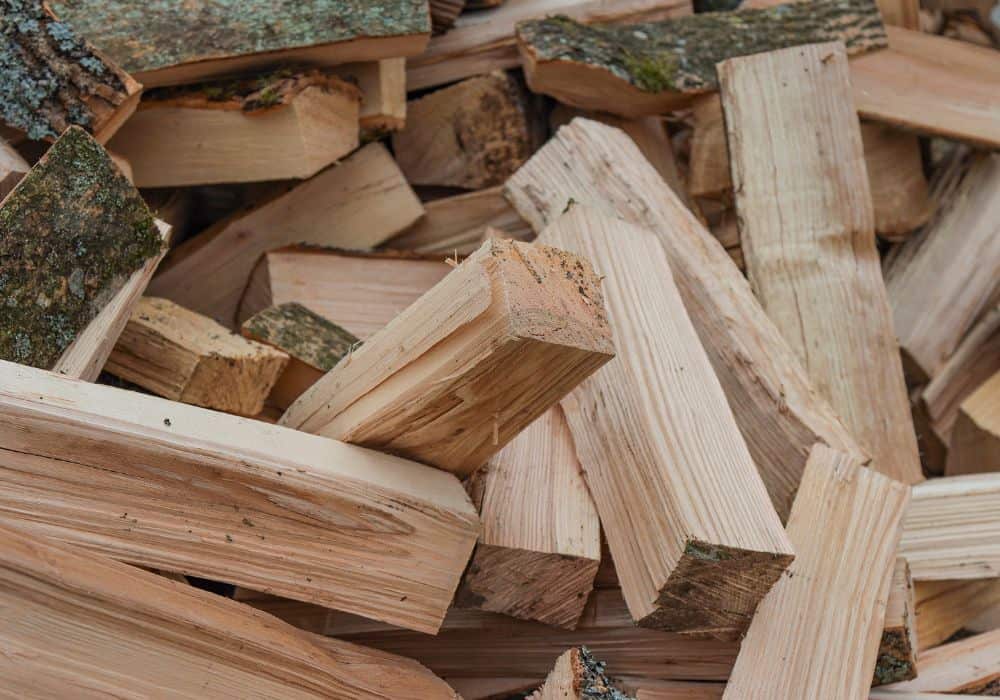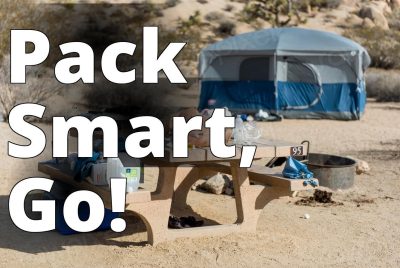Best Firewood For Camping: What Campfire Wood To Burn Guide
Best Firewood for Camping: A Comprehensive Guide
When it comes to camping, building a fire is a must.
A good campfire not only provides warmth and light, but it also creates a cozy atmosphere and serves as a focal point for socializing and cooking.
However, not all firewood is created equal, and choosing the right type of wood can make a big difference in the quality of your campfire.
The best types of firewood for camping are those that burn hot, long, and produce little smoke.

Hardwoods such as oak, hickory, and maple are dense and burn longer, providing a steadier heat source.
Fruitwood, such as apple and cherry wood, produce a sweet aroma and flavor to any meal that you cook over it.
However, it’s important to avoid softwoods like pine and cedar, which produce a lot of smoke and can even be dangerous to breathe in.
In this article, we’ll take a closer look at the best firewood for camping and what to steer clear of.
Identifying the Best Wood for Camping
When it comes to camping, having the right firewood is essential.
Not all wood is created equal, and some types are better suited for campfires than others.
In this section, we’ll explore the best types of wood for camping and what to look for when selecting firewood.
Best Types of Wood for Camping
Hardwoods such as oak, hickory, and maple are ideal for campfires because they burn hot and slow.
They also produce less smoke, making them a great choice for cooking. Other popular hardwoods for camping include ash, beech, and birch.
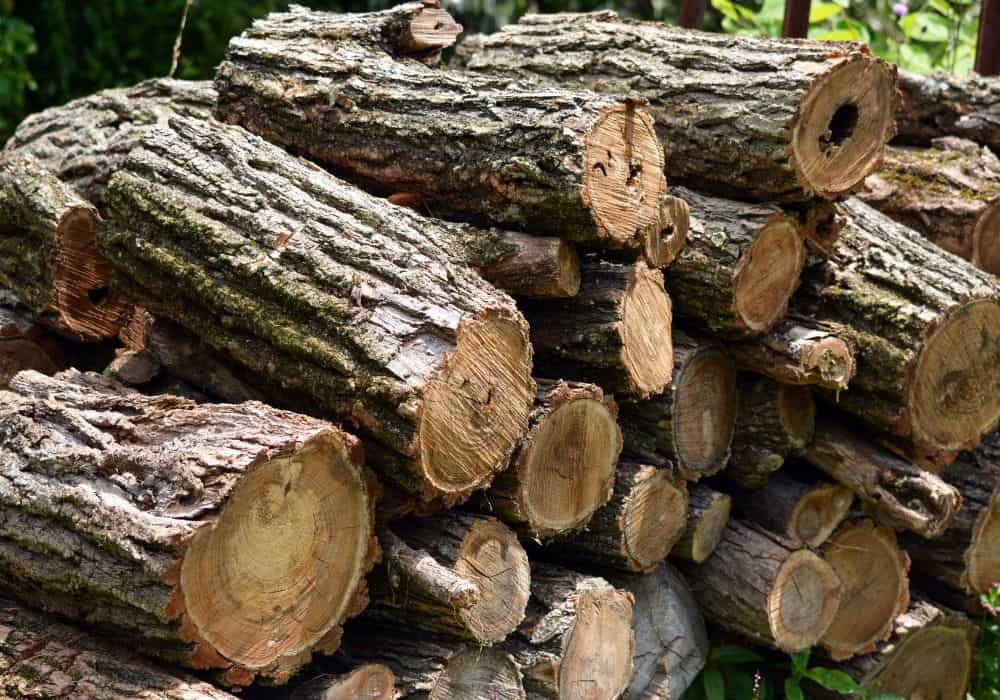
Softwoods like pine and fir are not recommended for campfires because they burn quickly, produce more smoke, and can even pop and throw sparks.
However, they can be used as kindling to get the fire started.
Characteristics of Good Firewood
When selecting firewood for camping, there are a few things to keep in mind. Look for wood that is:
- Dry: Wet or green wood is difficult to burn and produces more smoke.
- Seasoned: Wood that has been stored for at least six months to a year is easier to burn and produces less smoke.
- Clean: Avoid wood with mold, fungus, or insect damage as they can release harmful toxins when burned.
- Cut to the right size: Wood that is too long or too thick can be difficult to handle and may not fit in your fire pit or stove.
Types of Wood to Avoid
While many types of wood are suitable for campfires, there are a few to avoid. These include:
- Poisonous wood: Some types of wood, such as poison ivy, poison oak, and poison sumac, can cause skin irritation or even respiratory problems when burned.
- Softwoods: As mentioned earlier, softwoods like pine and fir are not recommended for campfires.
- Treated wood: Wood that has been treated with chemicals or paint can release harmful toxins when burned and should be avoided.
In conclusion, selecting the right firewood for camping is crucial for a successful and enjoyable trip.

Stick to hardwoods that are dry, seasoned, and clean, and avoid softwoods, poisonous wood, and treated wood.
By following these guidelines, you’ll be able to build a safe, efficient, and enjoyable campfire.
Understanding Firewood Characteristics
When it comes to choosing the right firewood for your camping trip, it’s important to understand the different characteristics of the wood you’re using.
In this section, we’ll cover the key factors to consider when selecting firewood: heat production, smoke output, and moisture content.
Heat Production
The amount of heat produced by a particular type of firewood is an important consideration, especially if you’re camping in colder weather.
Hardwoods like oak, hickory, and maple are known for producing a lot of heat and burning for a long time.
Softwoods like pine and spruce, on the other hand, tend to burn faster and produce less heat.
Smoke Output
Smoke output is another important factor to consider when selecting firewood for your campfire.
Some types of wood, like pine and cedar, produce a lot of smoke when burned, which can be irritating to your eyes and lungs.
Other woods, like oak and hickory, produce minimal smoke and are a better choice if you want to avoid smoke.
Moisture Content
The moisture content of firewood is also an important consideration. Wet or green wood will produce a lot of smoke and won’t burn as efficiently as dry wood.
It’s best to use wood that has been seasoned for at least six months to a year, which allows the moisture to evaporate and makes the wood burn more efficiently.
In summary, when selecting firewood for your camping trip, it’s important to consider the heat production, smoke output, and moisture content of the wood.
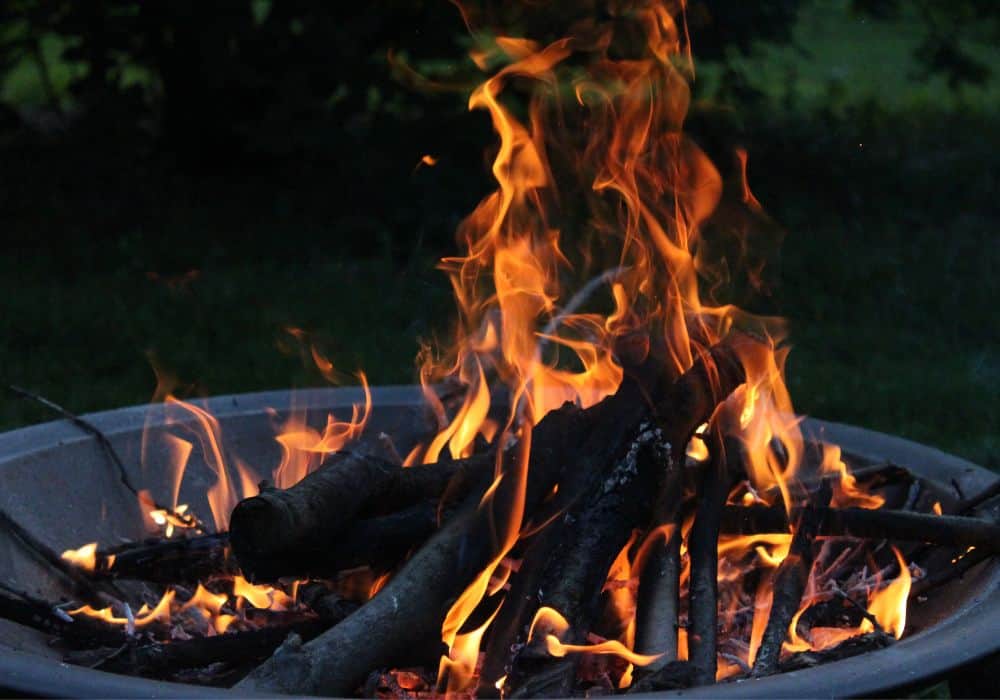
Hardwoods like oak and maple are great for producing a lot of heat, while softwoods like pine are better for starting fires.
If you want to avoid smoke, choose woods like oak and hickory that produce minimal smoke.
Finally, be sure to use seasoned wood that has been allowed to dry out for at least six months to a year for the most efficient burn.
Top Choices for Camping Firewood
When it comes to camping, having the right firewood can make all the difference.
The right firewood can help you start a fire easily, keep it going for a long time, and provide plenty of heat. In this section, we will discuss the top choices for camping firewood.
Hardwoods
Hardwoods are the best choice for camping firewood. They burn hotter and longer than softwoods, which means you will need less wood to keep your fire going.
Hardwoods also produce less smoke, which is important if you are camping in an area where fires are restricted.
Some of the best hardwoods for camping include:
- Oak: Oak is a dense, premium hardwood that burns hot and slow.
- Hickory: Hickory is another dense hardwood that burns hot and slow. It also has a sweet aroma that adds flavor to your food if you are cooking over the fire.
- Maple: Maple is a powerful hardwood that produces a high heat output. It burns hot and slow, making it an excellent choice for camping.
Softwoods
Softwoods are not the best option for camping firewood, but they can be a good choice if you are in a pinch.
Softwoods burn faster and produce more smoke than hardwoods, which means you will need more wood to keep your fire going.
Some popular choices for softwoods include:
- Pine: Pine is a softwood that is easy to light and burns hot. It is a good choice if you need to start a fire quickly.
- Cedar: Cedar is a softwood that burns hot and produces a sweet aroma. It is a good choice if you want to add flavor to your food while cooking over the fire.
Overall, if you want to have a great camping experience, it is important to choose the right firewood.
Hardwoods are the best option for camping firewood, but softwoods can be a good choice if you are in a pinch.
Remember to always check local fire restrictions before starting a fire and practice fire safety at all times.
Specific Wood Types for Camping
When it comes to camping, choosing the right wood for your campfire is crucial.
Not only does it affect the quality and duration of your fire, but it can also impact the environment around you.
Here are some of the best wood types for camping:
Oak wood is a popular choice for campfires due to its high heat output and long burn time.
White oak, in particular, is a great option for camping as it burns slowly and produces minimal smoke. It’s also readily available in most areas.
Ash Wood
Ash wood is another excellent choice for camping. It produces a steady flame and burns hot, making it perfect for cooking over.
Sugar maple, which is part of the ash family, is a popular choice for campers due to its sweet aroma.
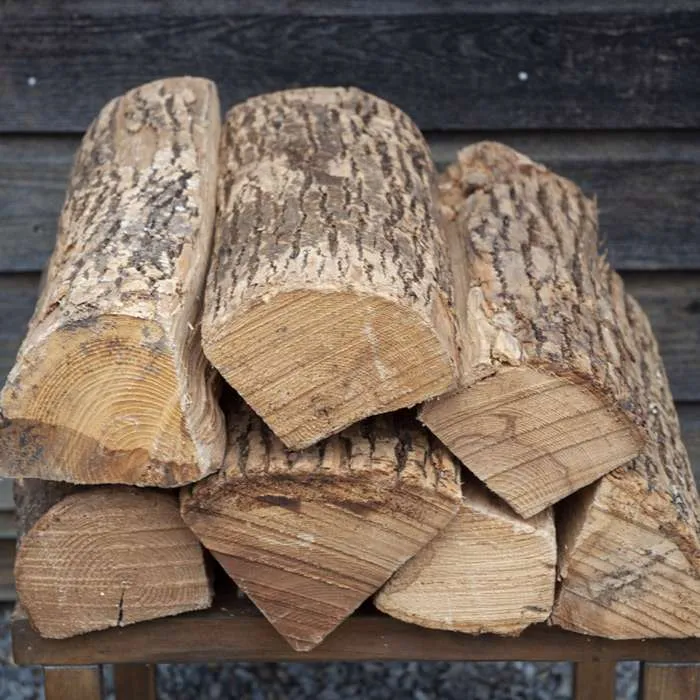
Cherry Wood
If you’re looking to add some flavor to your campfire cooking, cherry wood is a great option.
Black cherry wood, in particular, produces a sweet and fruity aroma that can enhance the taste of your food.
However, it burns quickly, so it’s best used in combination with other woods.
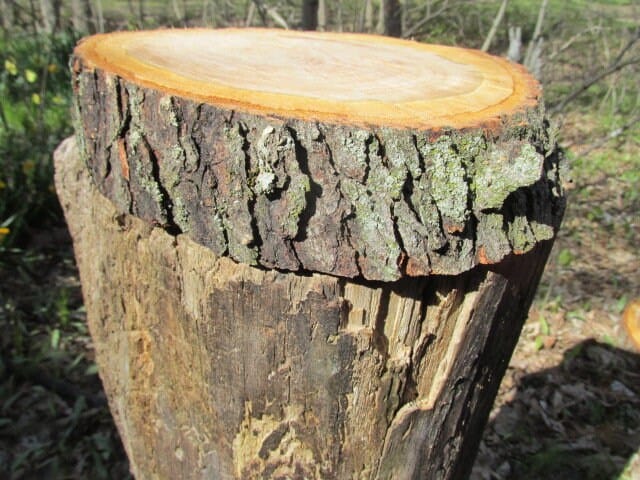
Cedar Wood
Cedar wood is a great choice for camping due to its pleasant aroma and ability to repel insects.
It burns quickly and produces minimal smoke, making it ideal for small campfires.
However, it’s important to note that cedar wood should not be used for cooking as it can be toxic.

Hickory Wood
Hickory wood is a popular choice for smoking meats, but it’s also great for campfires.
It produces a hot flame and a strong aroma that can add flavor to your food.
However, it can be difficult to find in some areas.
Overall, when choosing wood for your campfire, it’s important to consider factors such as heat output, burn time, aroma, and environmental impact.
By selecting the right wood, you can ensure a safe and enjoyable camping experience.
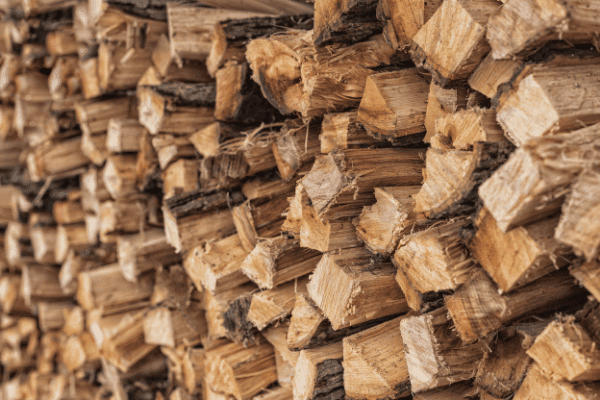
Avoiding Harmful Wood Types
When building a campfire, it’s essential to avoid using certain types of wood that can be harmful to both you and the environment.
Here are some wood types to avoid:
Poison Ivy and Poison Sumac
Poison ivy and poison sumac are two plants that can cause skin irritation and allergic reactions.
These plants contain an oil called urushiol that can remain on the wood for years.
Burning wood that contains urushiol can release the oil into the air, causing respiratory problems and skin irritation.
Therefore, it’s best to avoid burning wood from these plants altogether.
Harmful Chemicals
Some types of wood may contain harmful chemicals that can be released into the air when burned.
For example, wood that has been treated with chemicals such as creosote, pentachlorophenol, or copper chromium arsenate should never be burned.
These chemicals can cause respiratory problems, skin irritation, and even cancer.
Other Harmful Wood Types
In addition to poison ivy, poison sumac, and chemically treated wood, there are other types of wood that should be avoided when building a campfire. These include:
- Green wood: Burning green wood can cause excessive smoke and creosote buildup in your chimney or flue. It’s best to use seasoned wood that has been dried for at least six months.
- Softwood: Softwood such as pine, spruce, and fir may be easy to find, but they burn quickly and produce a lot of smoke. Hardwood such as oak, hickory, and maple burn hotter and longer, making them a better choice for a campfire.
- Wood with mold or fungus: Burning wood that has mold or fungus can release spores into the air, which can cause respiratory problems.
In conclusion, it’s crucial to choose the right type of wood when building a campfire.
Avoiding harmful wood types such as poison ivy, poison sumac, chemically treated wood, green wood, softwood, and wood with mold or fungus can help ensure a safe and enjoyable camping experience for everyone.
Firewood Quantity and Storage
When it comes to camping, one of the most important things to consider is how much firewood you will need for your trip.
The amount of firewood needed will depend on a few factors, such as the length of your trip, the weather conditions, and the type of fire you plan on having.
Typically, for a weekend camping trip, you will need anywhere from 2 to 5 bundles of firewood per day.
However, it’s always better to bring more than you think you’ll need, just in case.
You don’t want to be left without any firewood in the middle of your trip.
To help you determine how much firewood you need, consider the following factors:
- Length of trip: The longer your trip, the more firewood you will need.
- Weather: If the weather is cold, you will need more firewood to keep warm.
- Type of fire: If you plan on having a large fire, you will need more firewood than if you plan on having a small fire.
- Size of pieces: Smaller pieces of firewood will burn faster, so you will need more of them to keep the fire going.
- Firewood type: Different types of firewood burn at different rates, so you will need to adjust the quantity accordingly.
- Camping wood’s moisture content: Wet wood will burn slower, so you will need more of it to keep the fire going.
It’s also important to store your firewood properly to keep it dry and ready to use.
You don’t want to be stuck with wet or damp firewood that won’t burn properly. Here are a few tips for storing firewood:
- Keep it off the ground: Store your firewood on a raised platform or on top of a tarp to keep it off the ground and away from moisture.
- Cover it: Use a tarp or other cover to protect your firewood from rain, snow, and other moisture.
- Keep it ventilated: Don’t store your firewood in an airtight container or in a location where there is no airflow. This can cause the wood to rot or become moldy.
- Don’t store it too close to your campfire: Keep your firewood at least 10 feet away from your campfire to prevent it from accidentally catching fire.
By following these tips and considering the factors mentioned above, you can ensure that you have enough firewood for your camping trip and that it is stored properly for use when you need it.
Best Practices for Campfire Cooking
When it comes to cooking over a campfire, there are a few best practices that we should follow to ensure a safe and enjoyable experience.
Here are some tips to keep in mind:
1. Choose the Right Fire Pit
Before you start cooking, make sure you have a suitable fire pit. It should be large enough to contain your fire and have a solid base to prevent it from tipping over. If you’re using a public fire pit, check with the park or campground to ensure it’s allowed and follow any regulations or restrictions.
2. Build a Safe Fire
When building your fire, use only dry firewood and kindling. Avoid using any wood that has been treated with chemicals or paint, as it can release toxic fumes when burned. Keep the fire small and contained within the fire pit, and never leave it unattended.
3. Use the Right Cooking Equipment
Invest in quality cooking equipment designed for campfire cooking. Cast iron skillets, grills, and Dutch ovens are great options. Make sure your equipment is sturdy and in good condition before using it.
4. Prep Your Food Ahead of Time
Prep your food before you start cooking to save time and ensure it cooks evenly. Cut vegetables and meat into bite-sized pieces, and marinate or season them as desired.
5. Monitor Your Food
Keep a close eye on your food as it cooks over the fire. Use a meat thermometer to ensure meat is cooked to the appropriate temperature, and stir or flip your food as needed to prevent burning.
6. Extinguish Your Fire Properly
When you’re finished cooking, extinguish your fire completely. Use water or dirt to put out the flames, and stir the ashes to ensure they’re cool to the touch. Never leave a fire unattended or assume it’s out without checking it thoroughly.
By following these best practices, we can enjoy delicious meals cooked over an open fire while also ensuring a safe and responsible camping experience.
Planning Your Next Camping Trip
When planning your next camping trip, it’s important to consider all the necessary items, including firewood.
A great campfire is one of the best parts of camping, but knowing how much firewood to bring and where to find it is crucial.
First, consider how long your trip will be and how much firewood you will need. A basic guideline is to bring eight bundles of firewood per day of camping, with each bundle containing five logs.
However, this may vary depending on how big or small each log is and how often you plan on having a fire.
Next, consider the type of firewood you want to bring. Some of the best firewood for camping includes maple wood, hickory, and oakwood.
These types of hardwoods burn slowly and extremely hot, making them ideal for a long-lasting fire.
When it comes to where to find firewood, it’s important to be responsible and considerate of the environment.
Avoid gathering firewood from the campsite or nearby areas, as this can damage the ecosystem. Instead, purchase firewood from a local store or bring your own from home.
It’s also important to follow campfire safety guidelines, including keeping the fire contained within a fire pit or ring, never leaving the fire unattended, and fully extinguishing the fire before leaving the campsite.
By planning ahead and being responsible, we can ensure a great campfire experience on our next camping trip in the great outdoors of the United States.
Conclusion
In summary, choosing the right firewood for your camping trip is crucial for a successful and enjoyable experience.
We have learned that hardwoods such as oak, hickory, and ash are the best options for campfires since they burn longer and offer a better heating output.
Fruitwoods such as apple and cherry wood are also great choices since they produce a sweet aroma and flavor to any meal that you cook over it.
When gathering firewood, it is important to follow proven methods to ensure that you have enough wood to keep your fire going throughout the night.
Avoid using softwoods such as pine or spruce as they burn quickly and produce a lot of smoke.
Remember to always check with the local authorities and follow any fire restrictions or regulations in the area.
Be responsible and safe when starting and maintaining your campfire.
By following these tips, you can ensure that you have a warm and inviting campfire to gather around during your camping trip.

